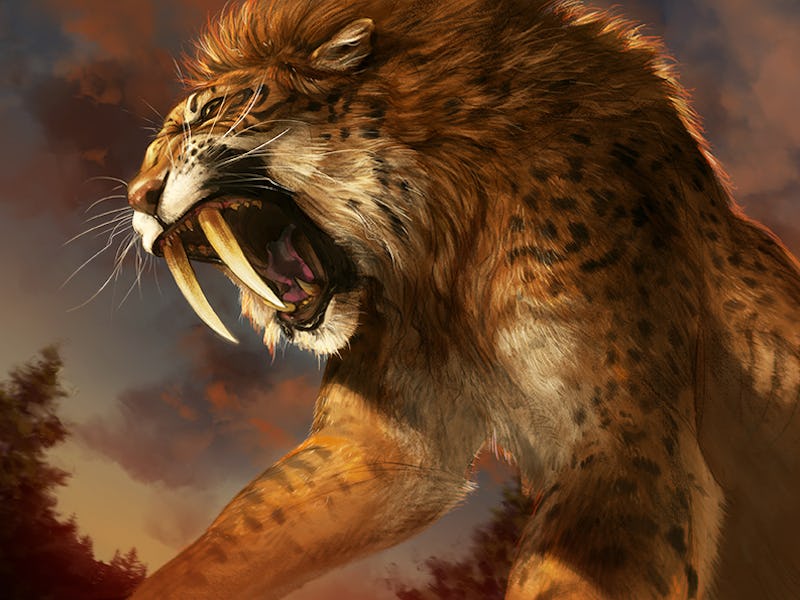Ancient DNA Connects Saber-Toothed Tigers and House Cats
"Not terribly close."

Saber-tooth cats (Machairodontinae) and modern house cats (Felis catus) shared a common ancestor … 20 million years ago. Perhaps one of the best-recognized large mammals of the Pleistocene epoch, the saber-toothed cat, aka saber-toothed tiger, is actually pretty poorly understood. DNA research now gives scientists a clearer picture of the relationship between Homotherium and Smilodon, the two genera of saber-toothed cats.
In a study published Thursday in the journal Current Biology, scientists examined mitochondrial DNA — which is passed on maternally — from fossilized saber-toothed cat remains. Based on their observations, the scientists hypothesize that Homotherium and Smilodon diverged from a common ancestor about 18 million years ago.
“[This] is quite a deep divergence, considering that all modern cat-like species are estimated to have diverged 10-15 million years ago,” first author Johanna L.A. Paijmans of the University of Potsdam in Germany, tells Inverse. “This means that a house cat is closer related to a tiger than the two saber-toothed cat species are to each other.” This genetic insight fills in gaps in previous research on these animals, which was based mostly on their physical forms.
Homotherium and its cousin Smilodon diverged millions of years before modern cat-like animals branched from one another.
In addition to gaining greater insights into the ancestry of saber-toothed cats, the researchers also found evidence that could push up the date that Homotherium went extinct.
This Homothereum fossil, recovered from the North Sea, moves the date of the animal's extinction forward by 200,000 years.
“Our results have provided new insights into evolutionary history of saber-toothed cats, such as divergence times of their mitochondrial DNA,” says Paijmans. “Furthermore, we present DNA from the youngest Homotherium fossil from Europe, and thus provide genetic evidence that saber-toothed cats existed in Europe over 200,000 years later than previously believed.”
This fossil, recovered from the North Sea, could force researchers to reevaluate the demographic processes that led to the Homothereum genus’s extinction — or how we understand its extinction, at least.
“The Late Pleistocene Homotherium population in Eurasia may have existed at low population densities, effectively dropping under the ‘fossil detection threshold,’” write the authors. In other words, there may have been Homotheriums around after their supposed extinction date, but there were so few of them that they haven’t shown up in paleontological digs.
Back to the burning question, though: When Inverse asked Paijmans how closely related our modern cats are to saber-toothed cats, her response was, “Not terribly close.”
“Based on the mitochondrial DNA we have estimated that house cats and saber-toothed cats shared a common ancestor about 20 million years ago. House cats are thus closer related to tigers and puma’s than to saber-toothed cats.” Good luck breaking the news to your cat.